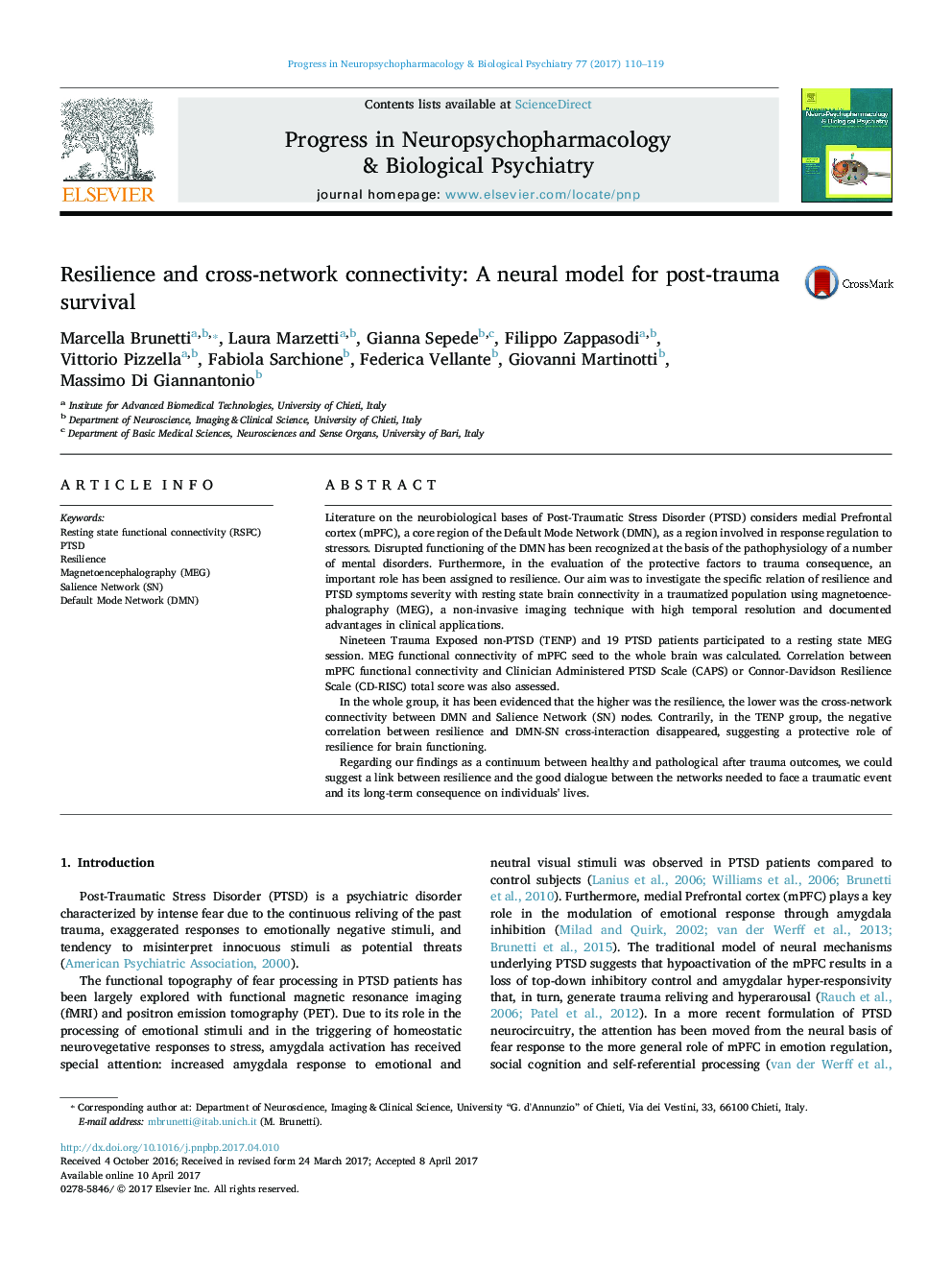| کد مقاله | کد نشریه | سال انتشار | مقاله انگلیسی | نسخه تمام متن |
|---|---|---|---|---|
| 5558049 | 1561017 | 2017 | 10 صفحه PDF | دانلود رایگان |
- We investigate the relation between resilience and PTSD resting state connectivity.
- MEG is used to map rhythmic functional connectivity with a coherence based approach.
- High resilience corresponds to beta band cross-network connectivity of DMN and SN.
- Resilience is linked to the dialogue between the networks needed to face stressors.
Literature on the neurobiological bases of Post-Traumatic Stress Disorder (PTSD) considers medial Prefrontal cortex (mPFC), a core region of the Default Mode Network (DMN), as a region involved in response regulation to stressors. Disrupted functioning of the DMN has been recognized at the basis of the pathophysiology of a number of mental disorders. Furthermore, in the evaluation of the protective factors to trauma consequence, an important role has been assigned to resilience. Our aim was to investigate the specific relation of resilience and PTSD symptoms severity with resting state brain connectivity in a traumatized population using magnetoencephalography (MEG), a non-invasive imaging technique with high temporal resolution and documented advantages in clinical applications.Nineteen Trauma Exposed non-PTSD (TENP) and 19 PTSD patients participated to a resting state MEG session. MEG functional connectivity of mPFC seed to the whole brain was calculated. Correlation between mPFC functional connectivity and Clinician Administered PTSD Scale (CAPS) or Connor-Davidson Resilience Scale (CD-RISC) total score was also assessed.In the whole group, it has been evidenced that the higher was the resilience, the lower was the cross-network connectivity between DMN and Salience Network (SN) nodes. Contrarily, in the TENP group, the negative correlation between resilience and DMN-SN cross-interaction disappeared, suggesting a protective role of resilience for brain functioning.Regarding our findings as a continuum between healthy and pathological after trauma outcomes, we could suggest a link between resilience and the good dialogue between the networks needed to face a traumatic event and its long-term consequence on individuals' lives.
Journal: Progress in Neuro-Psychopharmacology and Biological Psychiatry - Volume 77, 3 July 2017, Pages 110-119
